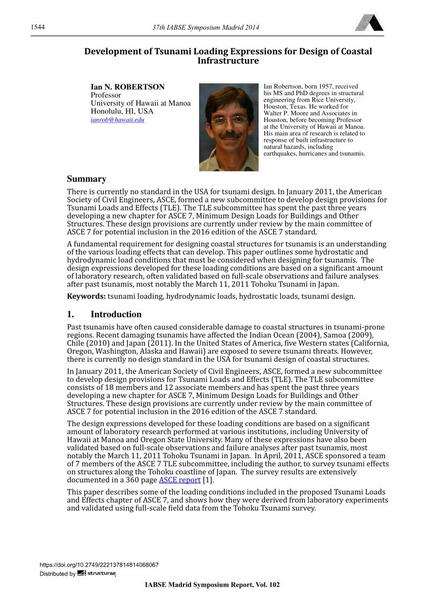Development of Tsunami Loading Expressions for Design of Coastal Infrastructure

|
|
|||||||||||
Bibliografische Angaben
| Autor(en): |
Ian N. Robertson
|
||||
|---|---|---|---|---|---|
| Medium: | Tagungsbeitrag | ||||
| Sprache(n): | Englisch | ||||
| Tagung: | IABSE Symposium: Engineering for Progress, Nature and People, Madrid, Spain, 3-5 September 2014 | ||||
| Veröffentlicht in: | IABSE Symposium Madrid 2014 | ||||
|
|||||
| Seite(n): | 1544-1551 | ||||
| Anzahl der Seiten (im PDF): | 8 | ||||
| Jahr: | 2014 | ||||
| DOI: | 10.2749/222137814814068067 | ||||
| Abstrakt: |
There is currently no standard in the USA for tsunami design. In January 2011, the American Society of Civil Engineers, ASCE, formed a new subcommittee to develop design provisions for Tsunami Loads and Effects (TLE). The TLE subcommittee has spent the past three years developing a new chapter for ASCE 7, Minimum Design Loads for Buildings and Other Structures. These design provisions are currently under review by the main committee of ASCE 7 for potential inclusion in the 2016 edition of the ASCE 7 standard. A fundamental requirement for designing coastal structures for tsunamis is an understanding of the various loading effects that can develop. This paper outlines some hydrostatic and hydrodynamic load conditions that must be considered when designing for tsunamis. The design expressions developed for these loading conditions are based on a significant amount of laboratory research, often validated based on full-scale observations and failure analyses after past tsunamis, most notably the March 11, 2011 Tohoku Tsunami in Japan. |
||||
